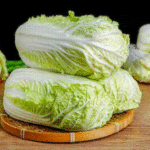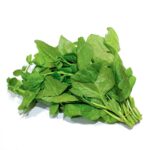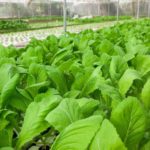The arrival of autumn and winter marks the peak season for Chinese cabbage, making it a popular choice for many. Chinese cabbage is versatile and can be stir-fried, boiled, dipped in hot pot, or made into kimchi, among other delicious dishes. When purchasing Chinese cabbage, you will typically find two varieties: one with yellow leaves and the other with green leaves. But beyond this noticeable color difference, are there any other distinctions between these two types of Chinese cabbage?
What are the differences between yellow and green Chinese cabbage? Which one should you choose?
– Yellow Chinese Cabbage
Yellow Chinese cabbage is usually grown during the summer and autumn seasons. This variety is not cold-hardy and only requires temperatures above 10°C to thrive. It has a short growing period and can be harvested approximately 50 days after planting. One distinctive feature of this type is its high water absorption. To prevent excessive water loss, the leaves tend to curl tightly around each other. Yellow Chinese cabbage also contains a good amount of fiber. This variety is well-suited for boiling, stir-frying, and salads.

Yellow and green Chinese cabbage differ not only in color but also in taste.
– Green Chinese Cabbage
Green Chinese cabbage, on the other hand, thrives in low-temperature environments and can even grow when temperatures dip below 0°C. This variety takes longer to mature, typically requiring 100-120 days before harvest. Consequently, the cabbage heads are usually larger, weighing between 2-3kg. Green Chinese cabbage tends to have less water content than its yellow counterpart and boasts a higher fiber content. It is ideal for pickling, making kimchi, or using as a filling for baked goods. Due to its lower water content, green Chinese cabbage also has a longer shelf life. When properly stored, it can last for up to a month during the winter.
Things to Keep in Mind When Buying Chinese Cabbage
Regardless of which type of Chinese cabbage you choose to buy, it’s important to keep the following considerations in mind.
– Avoid Cabbage with Black Spots
When inspecting Chinese cabbage, pay close attention to the leaves. If you notice any black spots on the surface, it’s best not to purchase it. These spots indicate that the cabbage may have been diseased during cultivation or improperly stored, resulting in spoilage. Cabbage with black spots will also have a less appealing flavor. Opt for heads with white surfaces, and choose those that feel moist and have crisp leaves, as these are the freshest.

When buying Chinese cabbage, carefully examine the leaves and their scent.
– Smell Test
Because Chinese cabbage has a high water content, it is prone to spoilage. To extend its shelf life, some vendors may spray formaldehyde or other preservatives on the surface of the cabbage. These chemicals are difficult to remove, even with thorough washing. Therefore, it’s important to smell the cabbage before purchasing. If you detect any strange, pungent odors, it’s best to avoid buying it.
Additionally, the color of cabbage sprayed with formaldehyde may appear brighter than usual, as this chemical helps preserve and enhance the vegetable’s freshness.
– Inspect the Stem
The thicker and harder the outer leaves of the Chinese cabbage are, the more developed its root system is. This indicates that the cabbage has absorbed more water during its growth, resulting in higher nutritional value. Choose cabbages with thick, sturdy stems that feel heavy for their size. Thinner, smaller cabbages tend to have a milder flavor and are less tasty.
The Ultimate Guide to Avoiding Toxic Veggies: Unveiling the Two Culprits Laden with Chemicals.
“Vegetables are an essential part of our daily diet, providing us with vital nutrients. However, the use of chemicals in farming practices has led to a concerning issue. Some vegetables are now contaminated with high levels of these chemicals, posing a significant risk to the health and well-being of consumers. It is imperative that we address this issue and find sustainable solutions to ensure the safety and nutritional value of our food.”














